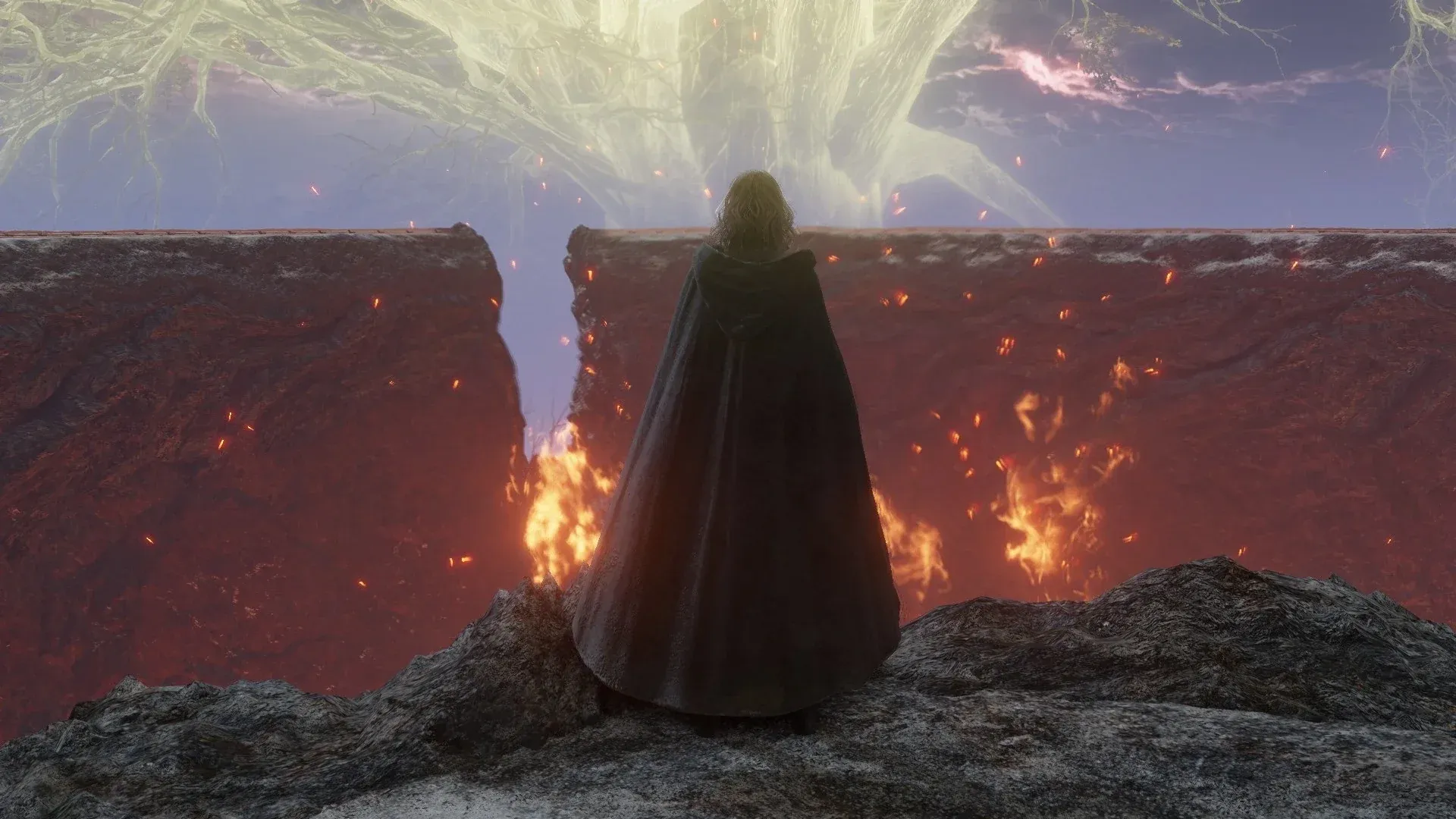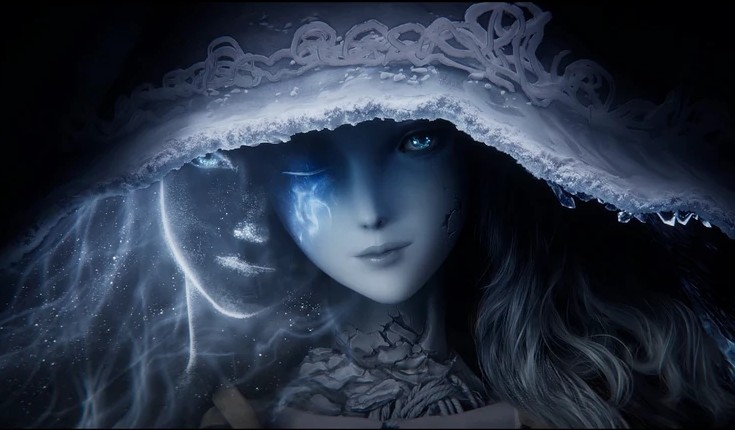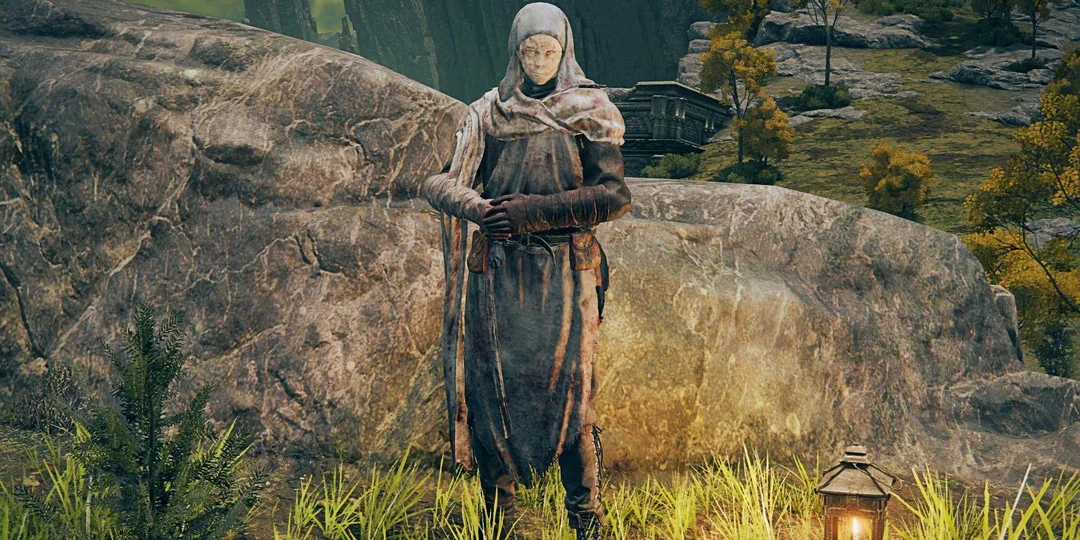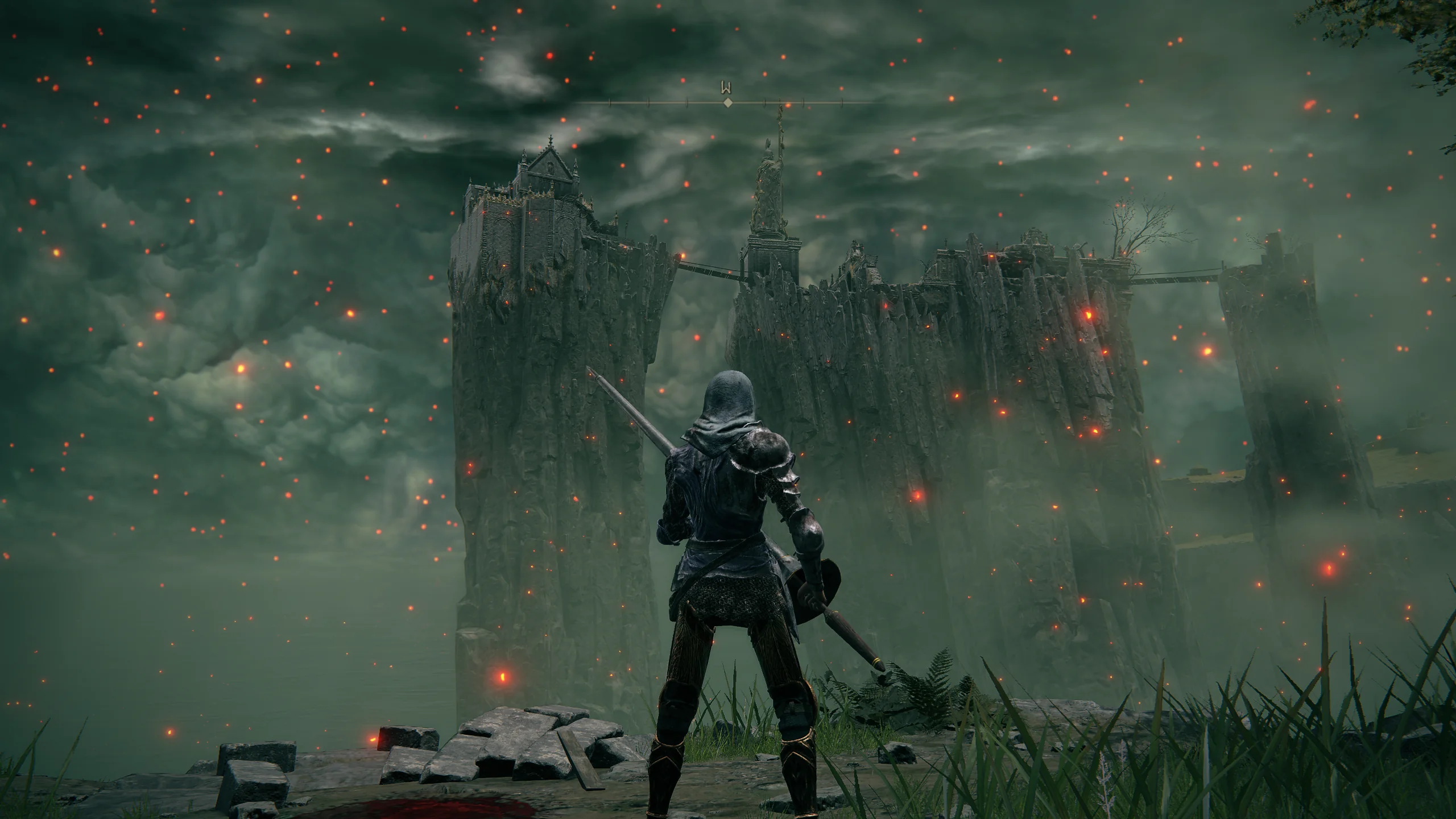· Elden Ring · 13 min read
Unraveling Melina: Exploring the lore of the Tarnished's maiden
Few characters has as much mystery and significance as Melina. A guiding presence to the Tarnished, she offers both strength and wisdom, yet her origins and true intentions remain shrouded in the lore of the Lands Between.

As players navigate this realm, Melina’s connections to Queen Marika, her potential demigod status, and her cryptic goals prompt deeper exploration into her role as both a helper and a harbinger of change. Her journey, interwoven with themes of rebirth, chaos, and destiny, challenges players to ponder the true cost of power and the nature of sacrifice.
Melina’s Lore and Origins
Melina, a guiding force within Elden Ring, is shrouded in mystery, her origins deeply intertwined with the intricate lore of the Lands Between. Identifying as a finger maiden, she offers the Tarnished the means to transform runes into strength and provides crucial guidance throughout their quest for the Elden Ring. Her journey begins with an offer to accompany the player to the foot of the Erdtree, a task she claims is tied to her own purpose. Her ambiguous nature is further emphasized by her sporadic appearances at various Sites of Grace, where she engages with the player, revealing glimpses of her connection to the game’s overarching narrative.

Hints of her lineage and origins are scattered throughout the game, suggesting a profound connection to Queen Marika. In the game files, she is referred to as “MaricaOfDaughter,” and her dialogue alludes to the possibility that Marika is her mother.
Melina herself admits to a lack of traditional birth, paralleling her with other unique beings like Millicent, who share a bond with their progenitors through non-conventional means. Her role as a potential harbinger of rebirth aligns with the thematic elements of renewal and fire, as she aids the player in their quest to become the Elden Lord. These connections weave her fate tightly with the narrative fabric of Elden Ring, making her an essential piece in the tapestry of its lore.
Is Melina a Demigod?
Speaking of Elden Ring’s lore, Melina’s potential status as a demigod emerges as a tantalizing thread. Her game-file name, “MaricaOfDaughter,” and her dialogue heavily suggest a lineage directly tied to Queen Marika, a figure central to the mythos of the Lands Between. This connection positions Melina among the ranks of demigods like Malenia and Miquella, who are similarly offspring of Marika. Melina’s abilities further underscore her possible demigod status; she wields the Blade of Calling and employs potent Erdtree incantations, echoing the divine powers associated with her family. Such capabilities not only mark her as exceptional but also align with the formidable prowess expected of demigods.
What is Melina’s Goal?

Melina’s ultimate goal is to reach the Erdtree and fulfill a purpose given to her by her mother, Marika. This purpose later developed to involve setting the Erdtree aflame, a task with profound significance and potential consequences for the world.
This decision reflect a complex interplay of duty and personal resolve. While she acts as a maiden, she reveals that she is “no maiden” and does not offer traditional guidance, indicating her own struggle with identity and purpose. Her willingness to accompany the player and aid them in becoming the Elden Lord suggests that her goals may align with the player’s journey. Yet, her warnings against the Frenzied Flame and her intention to set the Erdtree ablaze imply a deeper, possibly conflicting, agenda.
Melina’s choices influence the player’s path and the destiny of the Lands Between, as she embodies both a helper and a potential harbinger of change. She navigates the delicate balance between guiding the Tarnished and pursuing her own vision of the world’s future.
Why Melina Wants to Burn the Erdtree
Melina’s desire to set the Erdtree aflame is deeply intertwined with her personal journey and the overarching narrative of the Lands Between. Her purpose, originally bestowed upon her by her mother, has transformed into a mission driven by her own volition. This act is a calculated step towards a new epoch, one glistening with life beyond the confines of the Erdtree’s rejection.
The thorns of the Erdtree, described as the “Thorns of Rejection,” symbolize an impenetrable barrier that prevents the world from evolving beyond the stagnant order imposed by the divine. Melina’s intent to burn the Erdtree represents a desire to transcend this stasis, to allow for the birth of a new world unshackled by the constraints of the past.
Thematically, Melina’s desire to burn the Erdtree aligns with the narrative’s exploration of chaos versus order, life versus death. Her actions echo the sentiments of those who seek liberation from the oppressive cycle of existence dictated by the Erdtree. By setting it aflame, Melina envisions a world where life endures despite its ruin and despair, embracing the chaos that devours all life and thought as a necessary force for rebirth and renewal.
This act challenges the player to consider the moral implications of their journey, as they are forced to choose between perpetuating the existing order or embracing the uncertainty of a new beginning. In doing so, Melina not only asserts her autonomy but also invites the player to reflect on the nature of power, sacrifice, and the true cost of change.
Does Melina Die When You Burn the Erdtree?

In a sense, yes. Burning the Erdtree requires her to sacrifice her spirit. The decision to burn the Erdtree is a profound turning point in Elden Ring, laden with consequences that ripple through the fabric of its world. Melina, the finger maiden guiding the Tarnished, stands at the heart of this moment, embodying both the torchbearer and the sacrifice. As the player contemplates igniting the Erdtree, Melina’s resolve to fulfill her purpose—bestowed by her mother yet embraced by her own volition—culminates in an act of self-immolation.
This fiery consummation is not merely a physical demise but a spiritual transcendence, as she chooses to walk alongside the flame, tethering her fate to the destiny of the world. Her sacrifice is a cardinal sin, an act of kindling that defies the sanctity of life and the order of the Golden Tree. Yet, it is a necessary transgression to chart a path beyond the thorns of rejection, towards a new epoch of the Erdtree.
The emotional gravitas of this choice reverberates through the player’s journey. As Melina’s hand rests upon the Tarnished, her final words echo with gratitude and resolve, bidding farewell to her companion and Torrent. The player, now burdened with the weight of her sacrifice, must grapple with the moral wound of this decision.
Melina’s death, though a pyrrhic liberation, signifies both an ending and a beginning—a testament to her unwavering will to restore a world marred by ruin, yet a poignant reminder of the lives sacrificed for the sake of rebirth. This moment underscores the intricate dance between duty and desire.
Why Melina Hates Frenzied Flame
Melina’s aversion to the Frenzied Flame is rooted in its embodiment of chaos and destruction, which starkly contrasts with her values and purpose. The Frenzied Flame is described as a force that devours all life and thought, leaving a barren, lifeless world in its wake. This chaotic power opposes the beauty of life and the continuation of births that Melina cherishes. Her warnings to the player against meddling with the Frenzied Flame are not merely cautionary but are imbued with a deep-seated fear of the annihilation it promises. Melina’s journey with the player is one of guidance towards becoming the Elden Lord, a path that seeks to preserve life and restore order, not to embrace the chaos that the Frenzied Flame represents.
The thematic implications of the Frenzied Flame highlight the moral challenges faced by the player. To seek the power of the Flame is to reject the sanctity of life, a notion that Melina cannot condone. Her role as a guide and her personal volition drive her to vehemently oppose the Flame’s influence. Melina’s disdain for the Frenzied Flame underscores her commitment to aiding the player in a journey that aligns with the preservation of life and the rejection of chaos. Her warnings serve as a crucial moral compass, urging the player to consider the consequences of their choices and the world they wish to create.
In this light, Melina’s hatred for the Frenzied Flame is not just a personal vendetta but a plea for the player to recognize the beauty and endurance of life, even amidst the world’s ruin.
Is Melina Related to Marika and Messmer?
The ethereal threads connecting Melina to Queen Marika and Messmer weave a tapestry rich with implications for her identity and purpose within the world. The lore hints at Melina’s lineage, suggesting that she is the daughter of Marika, as confirmed by game files that label her “MaricaOfDaughter.” This connection is not merely one of blood but is imbued with the weight of divine purpose. Melina’s existence, much like a bud sprouting from her mother’s flower, signifies a rebirth or a harbinger of new beginnings, echoing the theme of fire that she embodies. The kindling she carries, akin to Messmer’s, signifies her role within a grander scheme, one that involves cleansing and paving the way for renewal, just as the flames consume to make way for new growth.
Melina’s connection to Messmer, her elder brother, further deepens her narrative significance. Messmer, much like Melina, bears a vision of fire, hinting at a shared destiny tied to the flames that burn away the old to make way for the new. Their shared lineage suggests that they are more than mere demigods but are intrinsically linked to the cyclical nature of the world, where death and rebirth are constants.
This bond between Melina, Marika, and Messmer illustrates a familial legacy marked by sacrifice and transformation, where Melina’s journey with the player character becomes a fulcrum for the potential reshaping of the world’s order. The familial ties between these characters are not only pivotal to understanding Melina’s personal struggle and purpose but also to grasping the broader narrative of the game, where lineage, sacrifice, and rebirth are ever-present themes.
Is Melina the Gloam-Eyed Queen?
The mysterious identity of the Gloam-Eyed Queen has long intrigued those who traverse the Lands Between, and Melina’s potential connection to this mysterious figure is a captivating theory. The Gloam-Eyed Queen, a title rather than a singular identity, is associated with Destined Death, a concept symbolized by dusk or gloam. Melina, with her left eye sealed by a bestial mark, emerges as a candidate for this mantle, especially considering the narrative parallels between her and figures like Messmer, who also bears a sealed left eye. The sealing of the left eye, steeped in symbolism, may signify a binding to the realm of shadow, a domain intertwined with Destined Death.

The possible adoption of the Gloam-Eyed Queen’s title by Melina could serve as both a homage and a defiance against Marika’s Golden Order. If Melina indeed shoulders this title, it suggests a deeper connection to the forces of Destined Death, positioning her as a pivotal character in the narrative’s unfolding. Her role as a guide to the Tarnished, combined with her potential ties to the Gloam-Eyed Queen, underscores her significance in the balance of power between Day, Dusk, and Night. This duality within Melina enriches the lore, hinting at an intricate tapestry of allegiance and rebellion, as she navigates the complex web of divine and mortal machinations.
What Happened to Melina’s Eye?
Melina’s sealed left eye is a defining feature that shrouds her in mystery, inviting speculation about its symbolism and narrative significance within Elden Ring. The recurring motif of a sealed left eye, seen in characters like Ranni, Messmer, and other demigods, suggests a deeper connection to the realm of shadow, a place where spirits and ethereal beings might be bound or linked.
In the context of Melina, whose role as a guide and maiden to the Tarnished is pivotal, her sealed eye could symbolize her fractured existence between the corporeal world and the shadowy realm. This divide might represent her struggle to fulfill her purpose or hint at a hidden aspect of her identity, potentially connecting her to larger cosmic forces at play in the Lands Between.
Moreover, the opening of Melina’s eye in the Frenzied Flame ending, where the Lord of Chaos unites fractured realms, underscores its symbolic significance. This act might signify the dissolution of barriers between realms, allowing Melina to fully embrace her role or destiny.

The transformation of her golden eye into an ashen hue suggests a departure from the Golden Order, aligning her with the themes of dusk and Destined Death. The symbolism of the left eye, a motif rich with interpretive possibilities, adds layers to Melina’s striking character, inviting players to ponder her true nature and the mysteries she embodies.
More Melina Lore Theories
The enigmatic nature of Melina has sparked numerous fan theories, each attempting to unravel the mysteries surrounding her origins, motivations, and connections within the lore of Elden Ring. One compelling theory posits that Melina might be a bodiless counterpart created as part of Ranni’s plot, possibly to destroy her empyrean body. This theory gains traction from the symbolism associated with her sealed eye, which some believe aligns her with the realm of shadow and connects her to other characters like Ranni and Messmer, who share similar traits. The sealed eye might indicate a division or fracture within her spirit, hinting at deeper connections to the cosmic and shadowy elements of the game’s world.
Another intriguing perspective suggests that Melina could be the Gloam-Eyed Queen, a title she might have adopted after learning about her deceased aunt, as a form of honor and rebellion against Marika. This theory is bolstered by the symbolic transformation of her eyes in the Frenzied Flame ending, where her right eye fades, possibly representing the dusk or gloam that overtakes the day of Marika’s Golden Order.
The theory ties Melina to the broader narrative of the game, associating her with the themes of dusk and destined death, and positioning her as a pivotal figure in the unfolding cosmic drama. These interpretations enrich Melina’s character, adding layers of complexity to her role as a guide and her potential influence on the fate of the Lands Between.
Conclusion
As players journey through the Lands Between, Melina’s presence is felt as both a guiding light and a complex enigma. Her lineage as a demigod, her motivations to burn the Erdtree, and her disdain for the Frenzied Flame all contribute to a narrative rich in moral complexity and thematic depth.
Melina’s fate, whether as a sacrificial torchbearer or a defiant force against chaos, invites players to reflect on the nature of duty, identity, and the enduring cycle of life and death. In the end, Melina is proof of the intricate storytelling of Elden Ring, where every choice carries the weight of destiny, shaping the world and its future.



